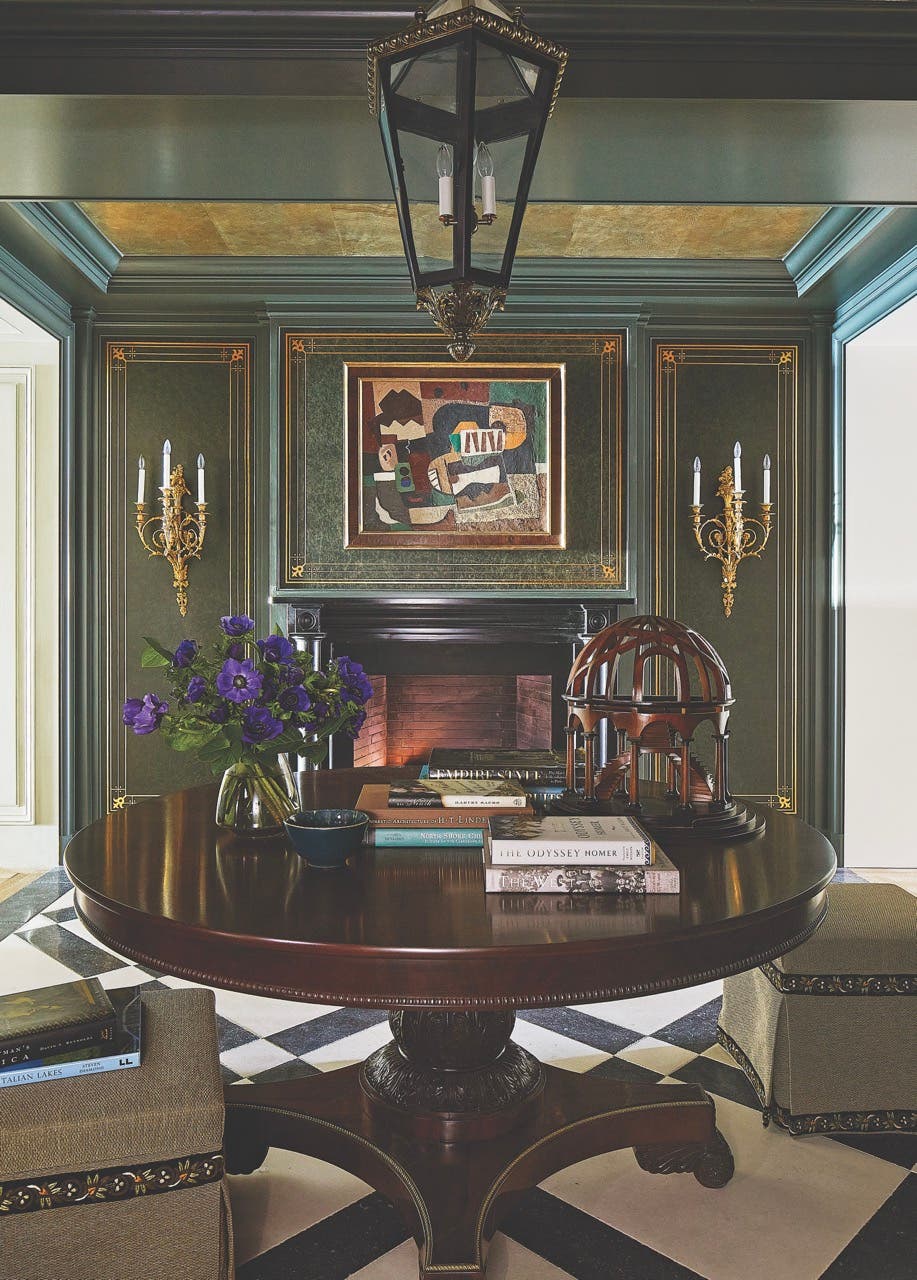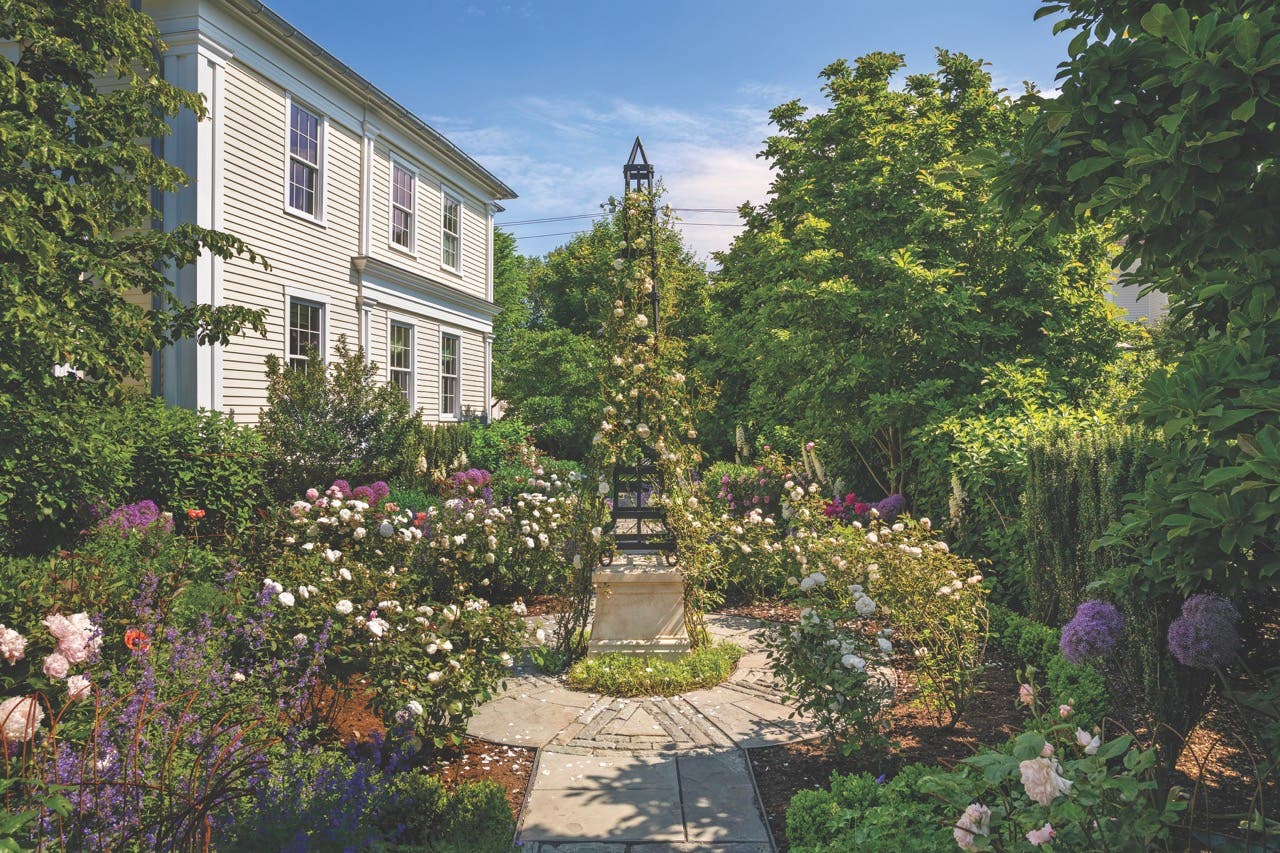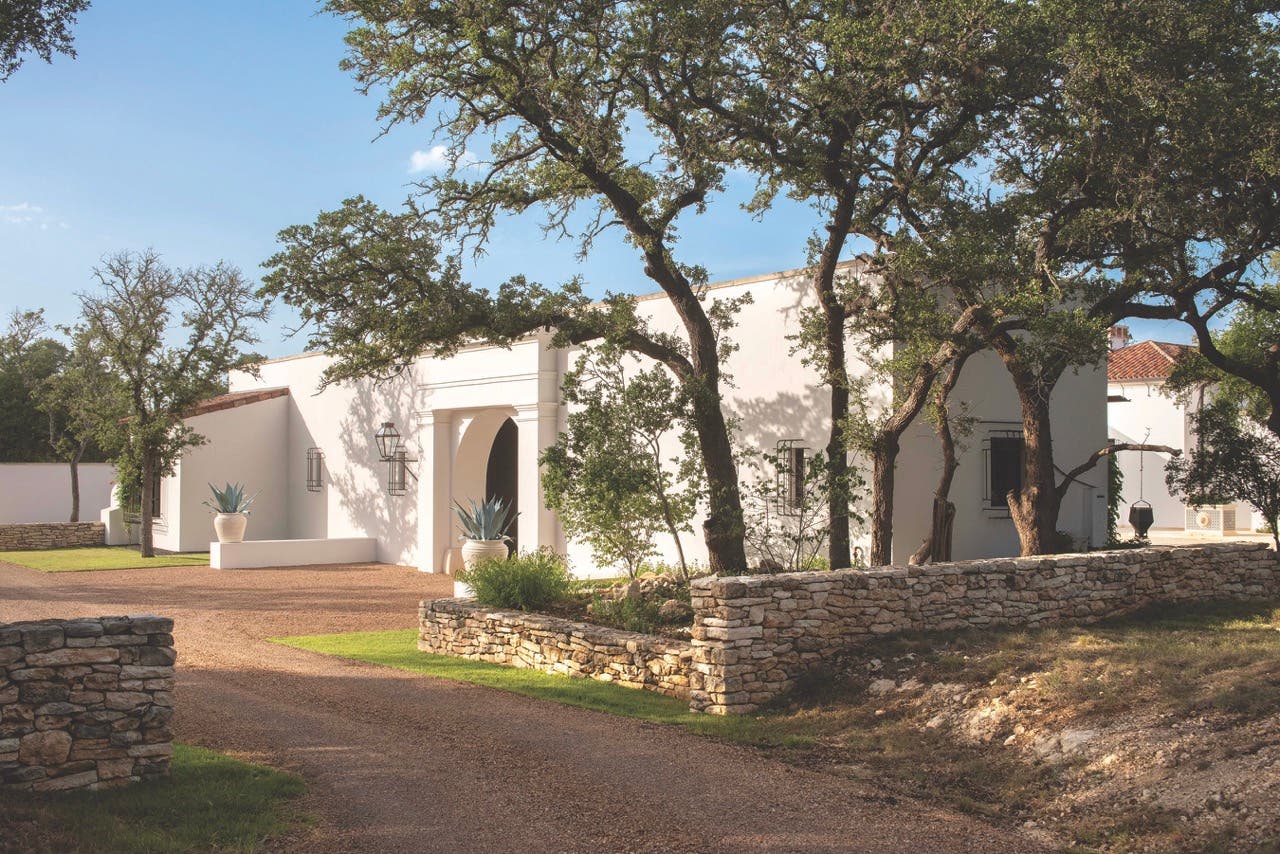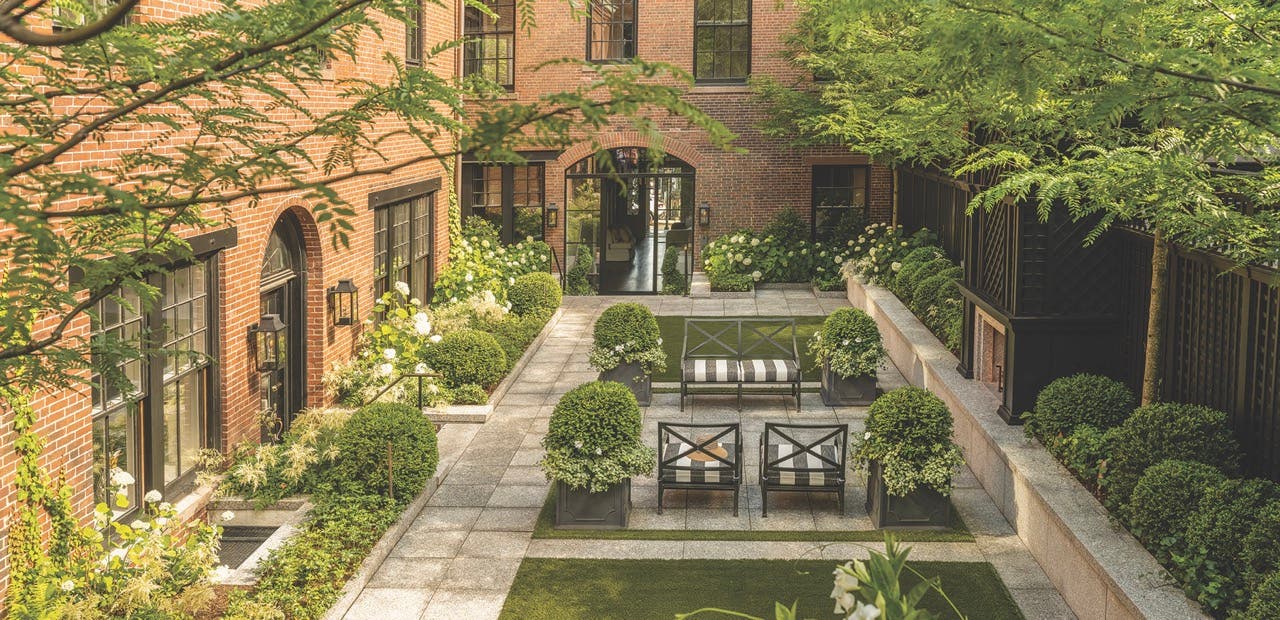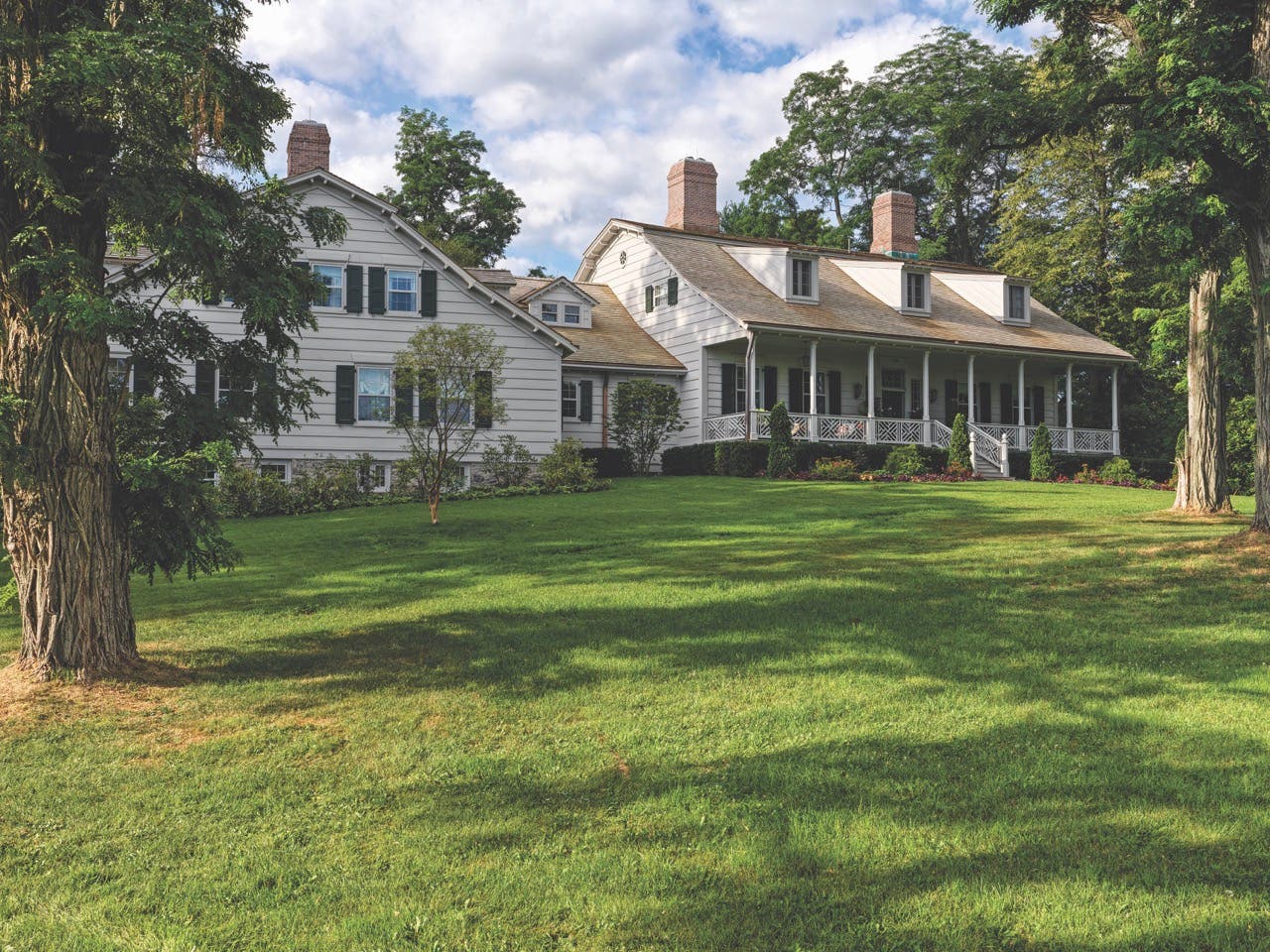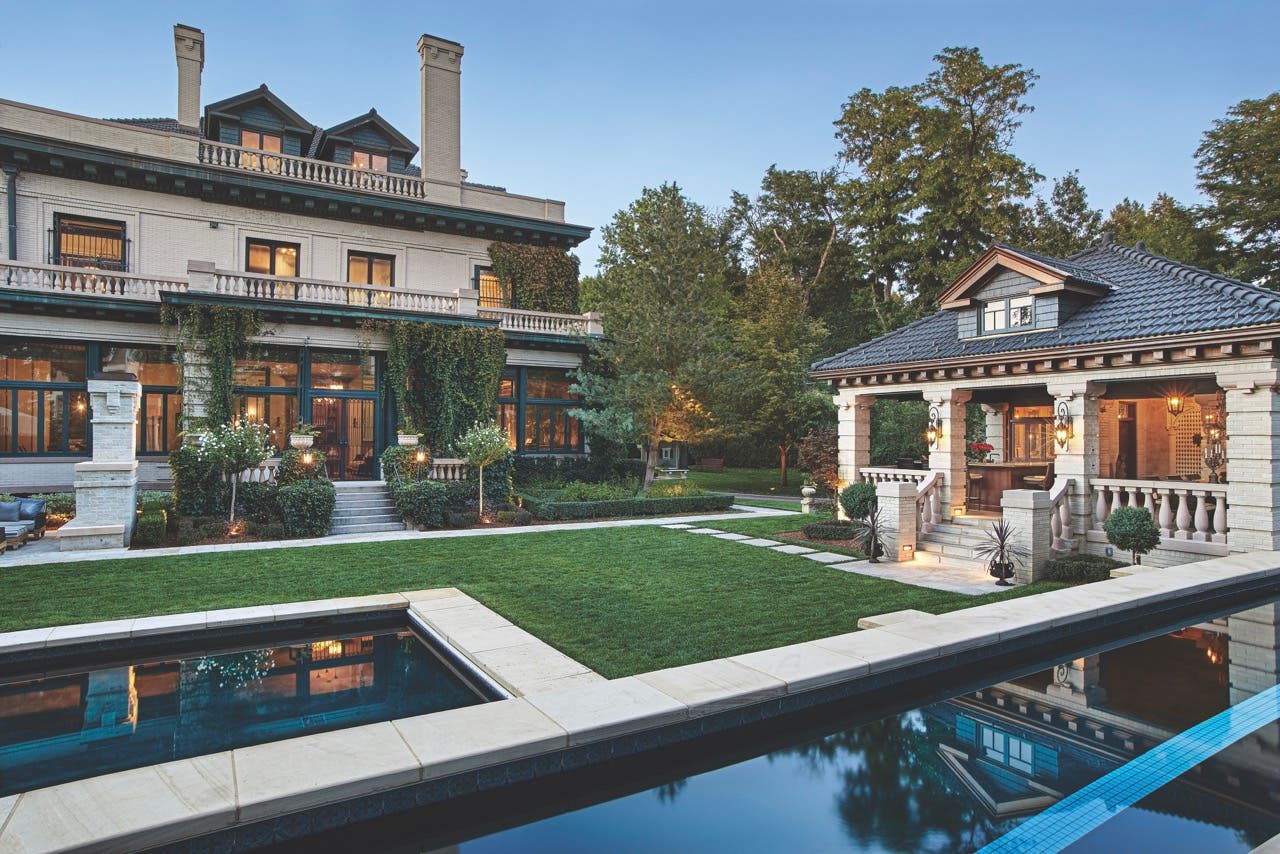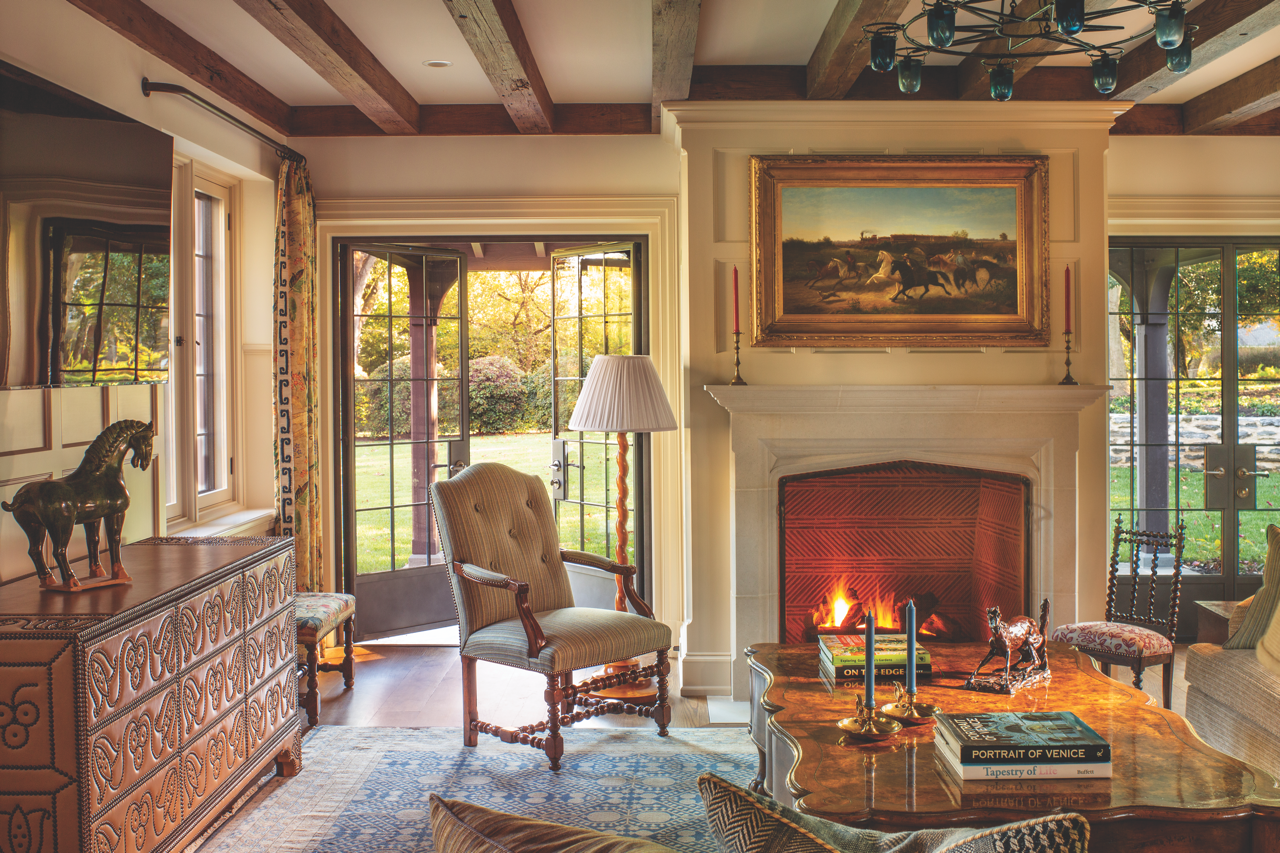
Palladio Awards
Cotswold-Inspired Residence – John Milner Architects, Inc.
Within an eight-acre park-like setting on Philadelphia’s storied Main Line, the team at John Milner Architects designed a new Cotswold-inspired residence.
The house, which possesses the style’s quintessential low eaves, steep roofs, tall chimneys, and cross gables, replaces what senior associate Edward Wheeler, AIA, describes as “a modest English vernacular cottage that was difficult to adapt.”
In fact, the owners’ original thought was simply to create an addition to the early 20th-century cottage on the property, a plan they soon abandoned given its small size, low ceiling heights, and problematic siting on the property.
“We drew inspiration from the existing English-style cottage on the property and houses and gardens in the Cotswold region of England, as well as early-20th-century revival-style houses in Philadelphia,” says principal Christopher Miller, AIA. “The owner embraced and loved the human scale, natural materials, and hand-crafted nature of the work.”
Siting the new house was key. Although the plot is substantial, the original cottage was positioned too close to neighboring residences and at a low point on the site.
The new central location, which features mature trees and an open lawn with views of the landscape from every room, satisfies the owners’ desires for both a country house and a centralized location within a community, Wheeler says.
The exterior blends local Media mica schist stone similar to Wissahickon schist, which was historically used in the region, with hand-tooled Indiana limestone detailing. “Each piece of the limestone was drawn and detailed,” says associate Kara Smith. “They were produced by CNC machinery, and the hand-tooling was added to give an antique appearance.”

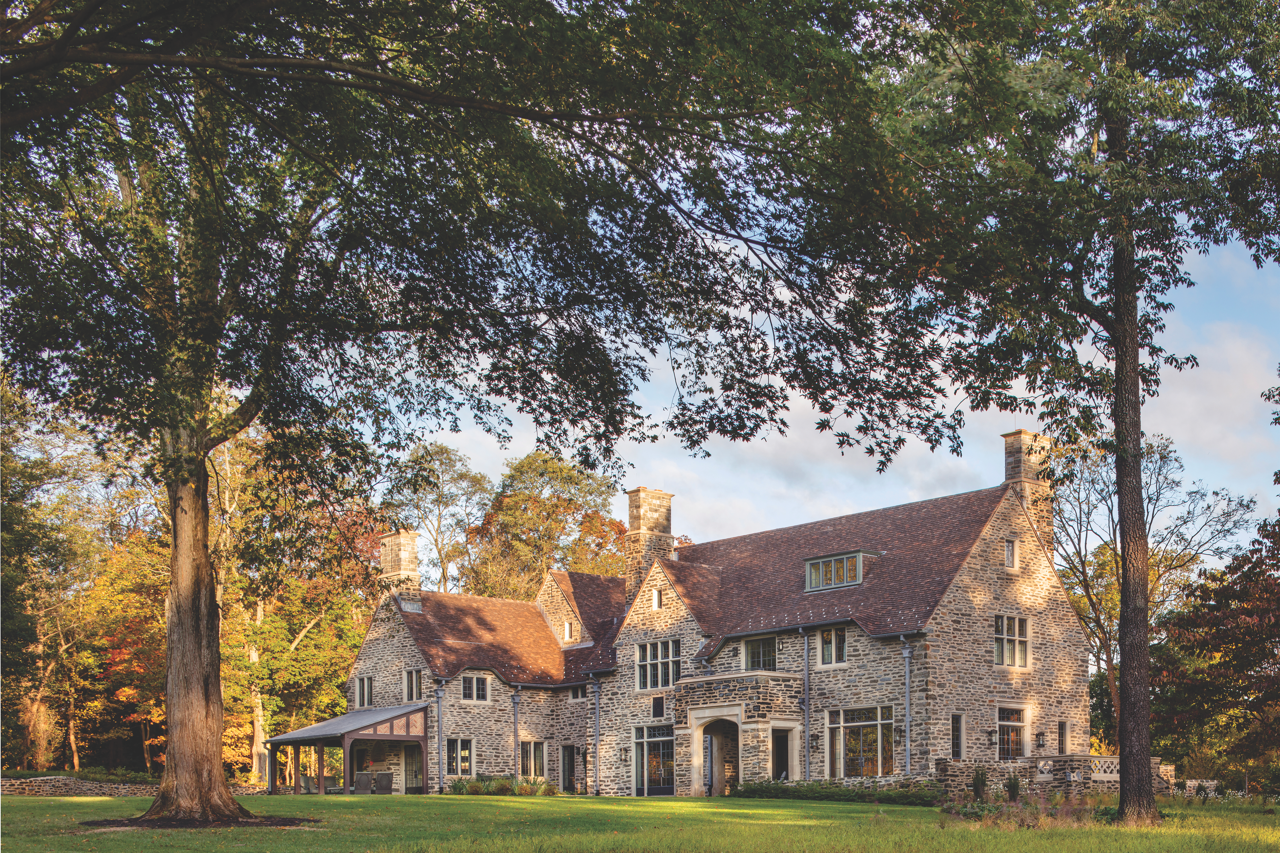
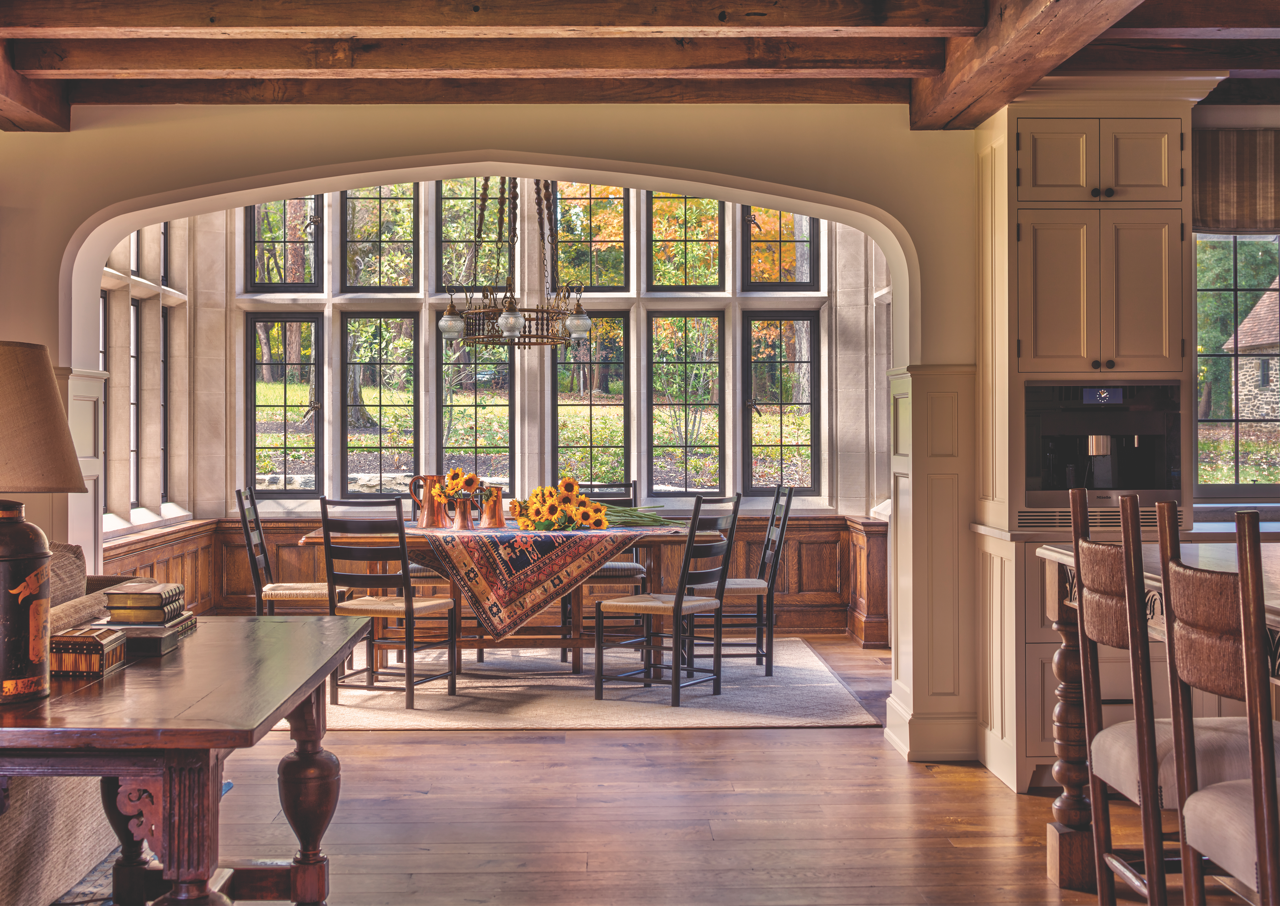
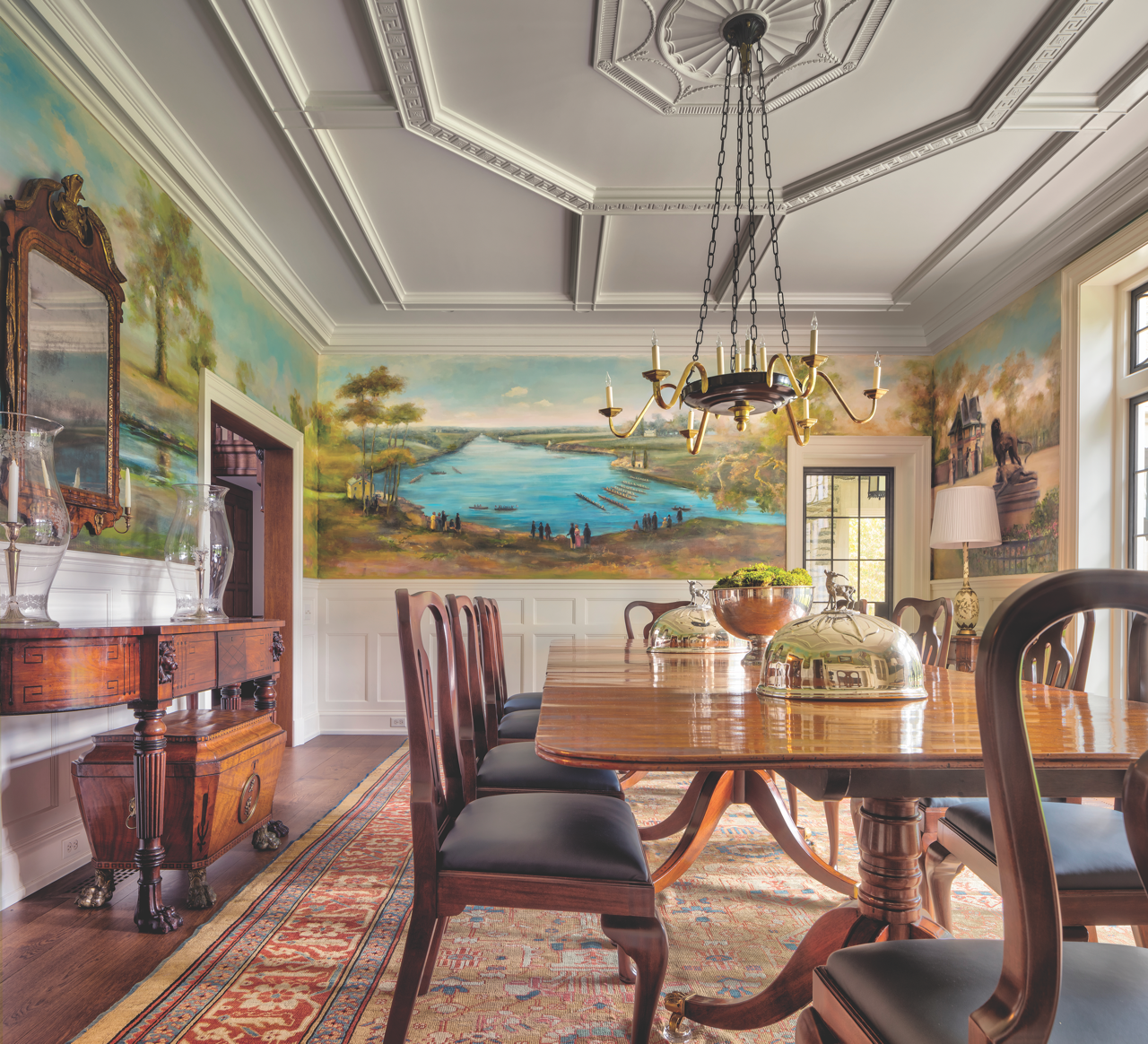
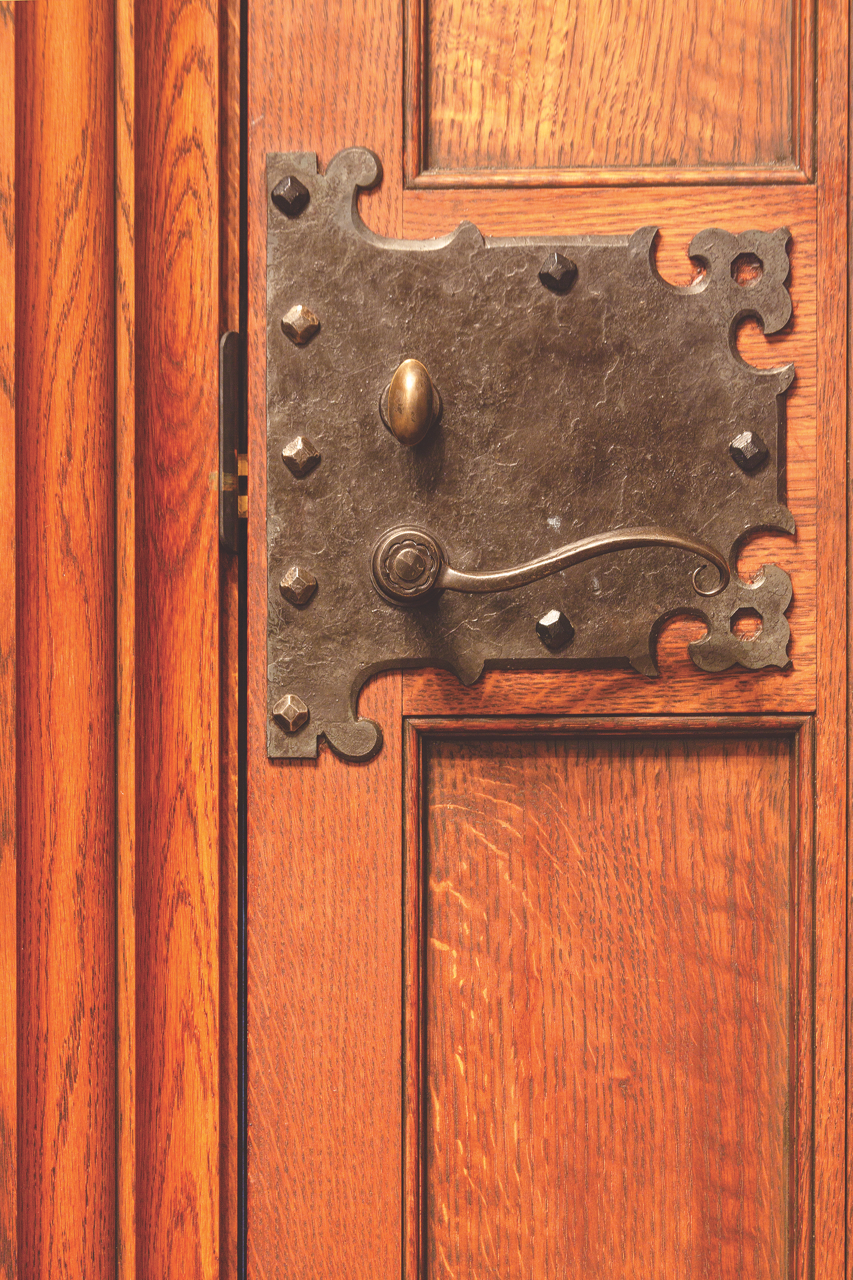
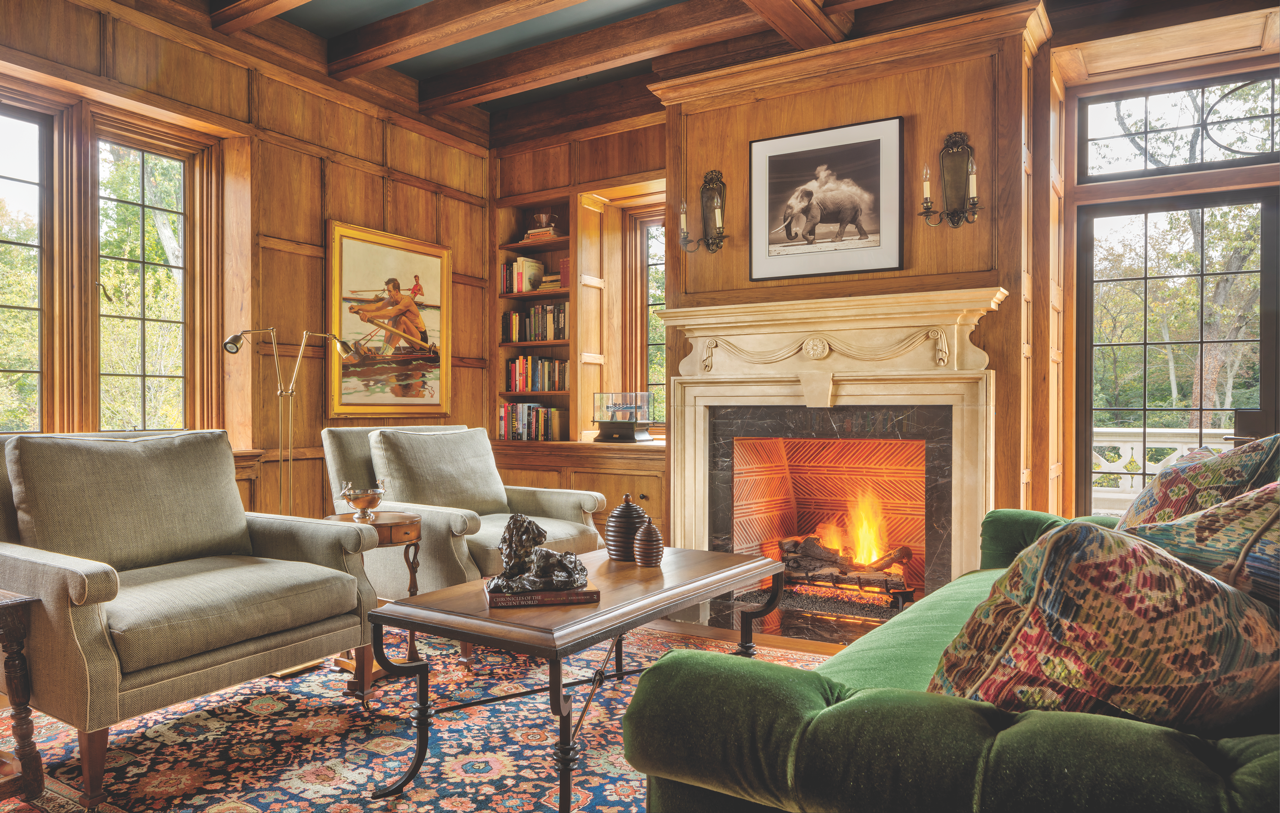
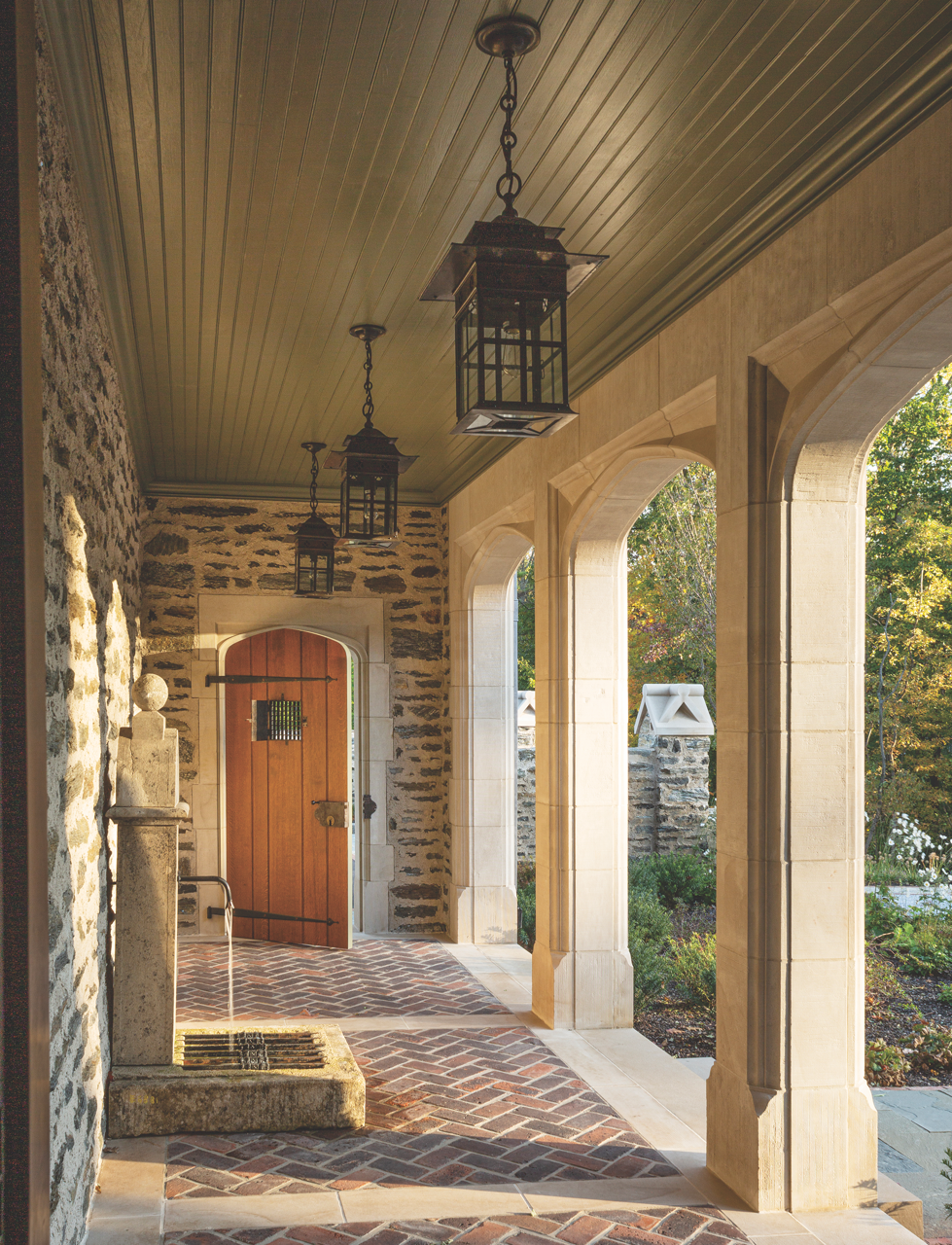
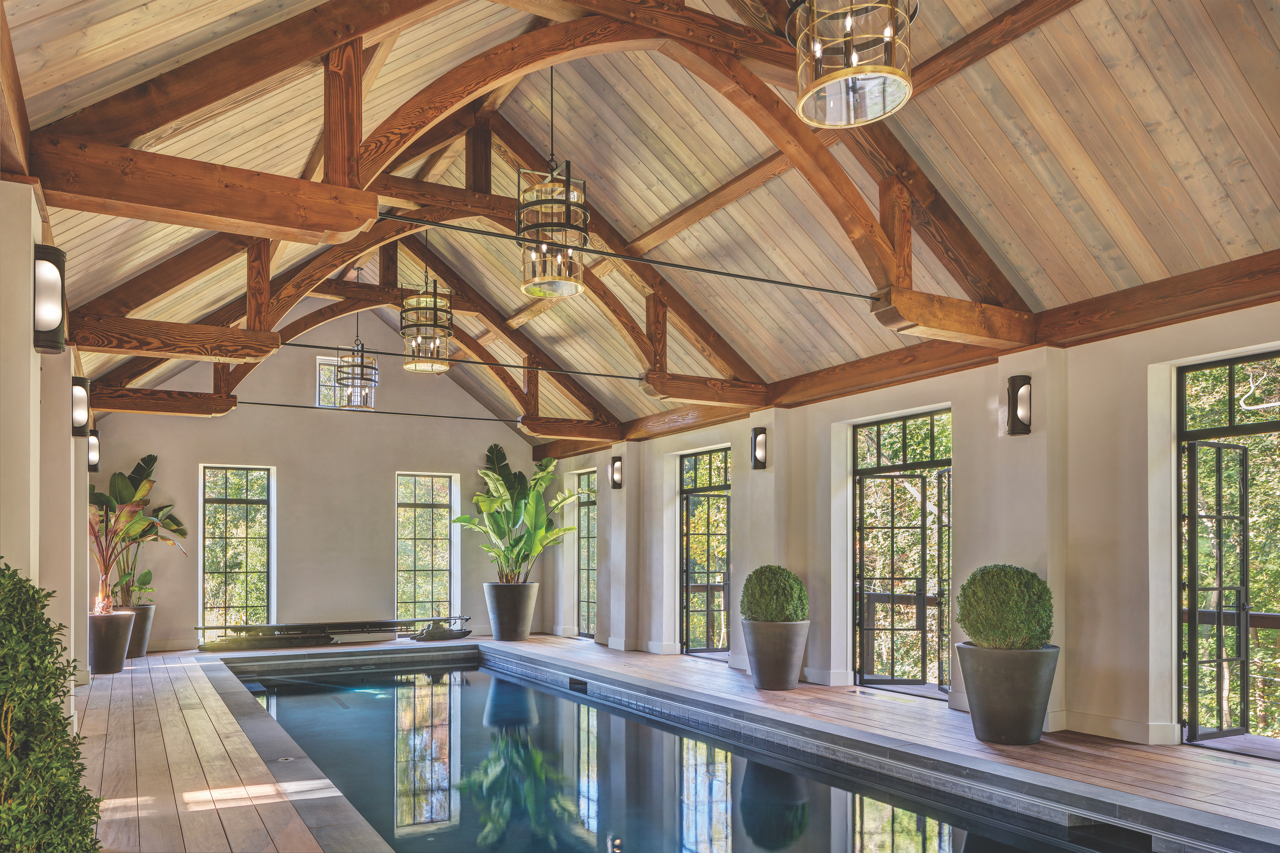
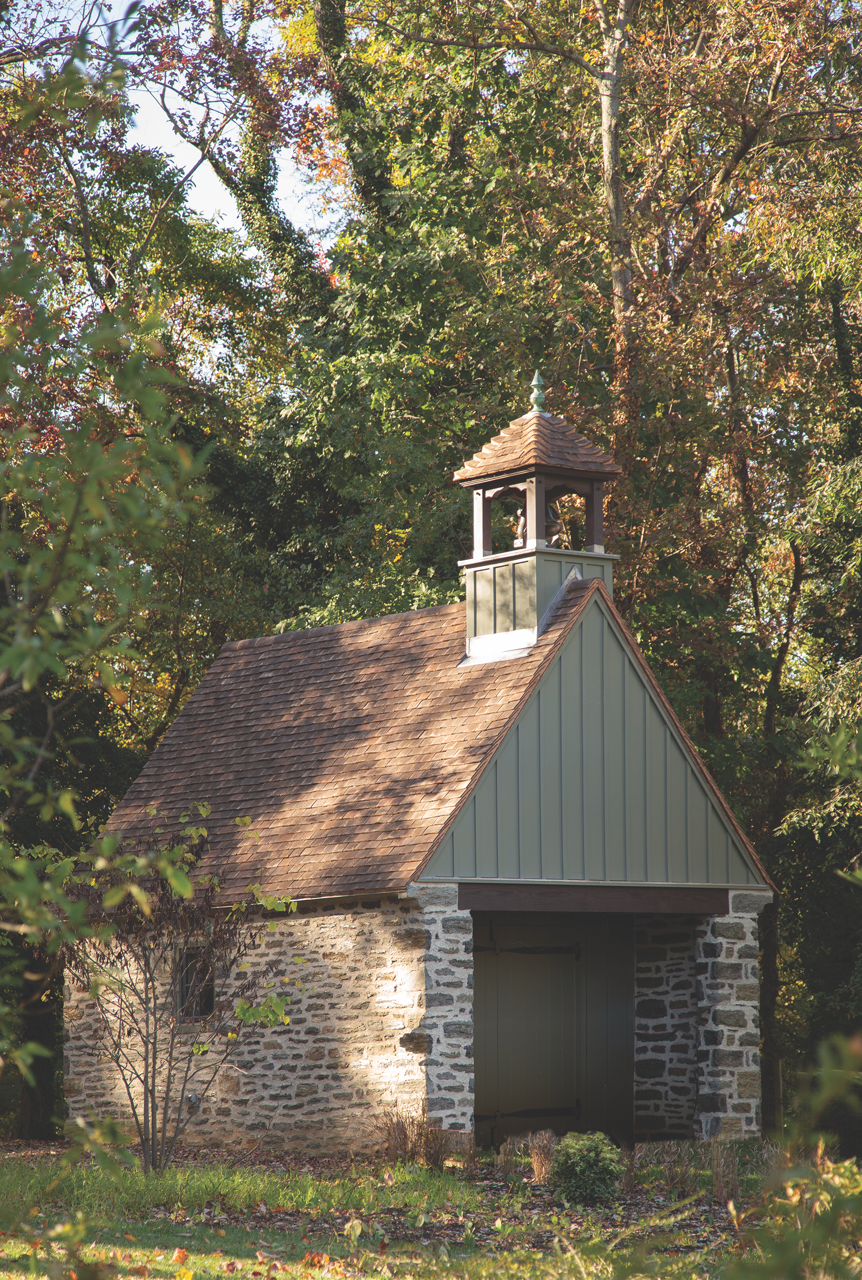
One of the more distinctive architectural features is the eyebrow dormers. The team made full-scale mock-ups of each and brought them on site to lay out the three colors of the terra-cotta roof tiles to get the correct arrangement in various lights.
“In England, the roof may have been thatched,” Wheeler says, adding that this house is too large for such a treatment to be appropriate.
The team also did mock-ups of walls, windows, and cornices. Some of the windows and all of the doors are steel; some windows are wood and all are fabricated with lead cames.
The residence’s entrance announces itself with a porch that has a limestone portal with datestone, gabled parapet and a decorative limestone finial. Adjacent, an antique fountain from France resides in a three-bay limestone loggia.
The back of the house is defined by an expansive lawn that is accessible through a stone loggia and a timber-framed porch. A new outbuilding, in the style of the stable it replaces, houses the indoor swimming pool.
The style and detailing of the exterior architecture are carried through to the interior with custom millwork, plasterwork, and carved limestone elements. This is particularly apparent in the great room, where the firebox is lined with salvaged roof tiles and laid in a herringbone pattern on edge, creating what Smith calls “unique warmth.”
The natural-finish woodwork, including window seats, bookshelves, cabinets, and bunkbeds fabricated by five millwork shops, is executed in quarter-sawn white oak and butternut, depending on the specific room, and the hardwood flooring is fabricated from large white and red oak trees harvested from the property.
One of the finer details is the hand-painted mural in the dining room that features scenes from the City of Brotherly Love. Its main scene, of the city’s first regatta, was inspired by an 1853 painting that the client particularly liked.
From its stone exterior and timber framing to its intricate plasterwork ceilings, the design of the residence, Wheeler says, “is a delicate balance of refined and vernacular detailing.” TB
Key Suppliers
Architect
General Contractor
Pinemar
Interior Designer
Barbara Gisel Design
Landscape Architect
Jonathan Alderson, Landscape Architect
Masonry
Joseph Manero
and Sons
Roofing
Fergus Sweeney
Kitchen Cabinets
Harris Woodworking
Murals
John J. Devlieger, Artist
Faux Finishing
Robert Dionne, Decorative Art Services



